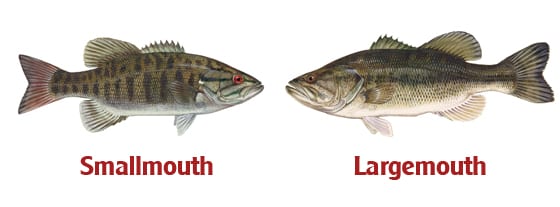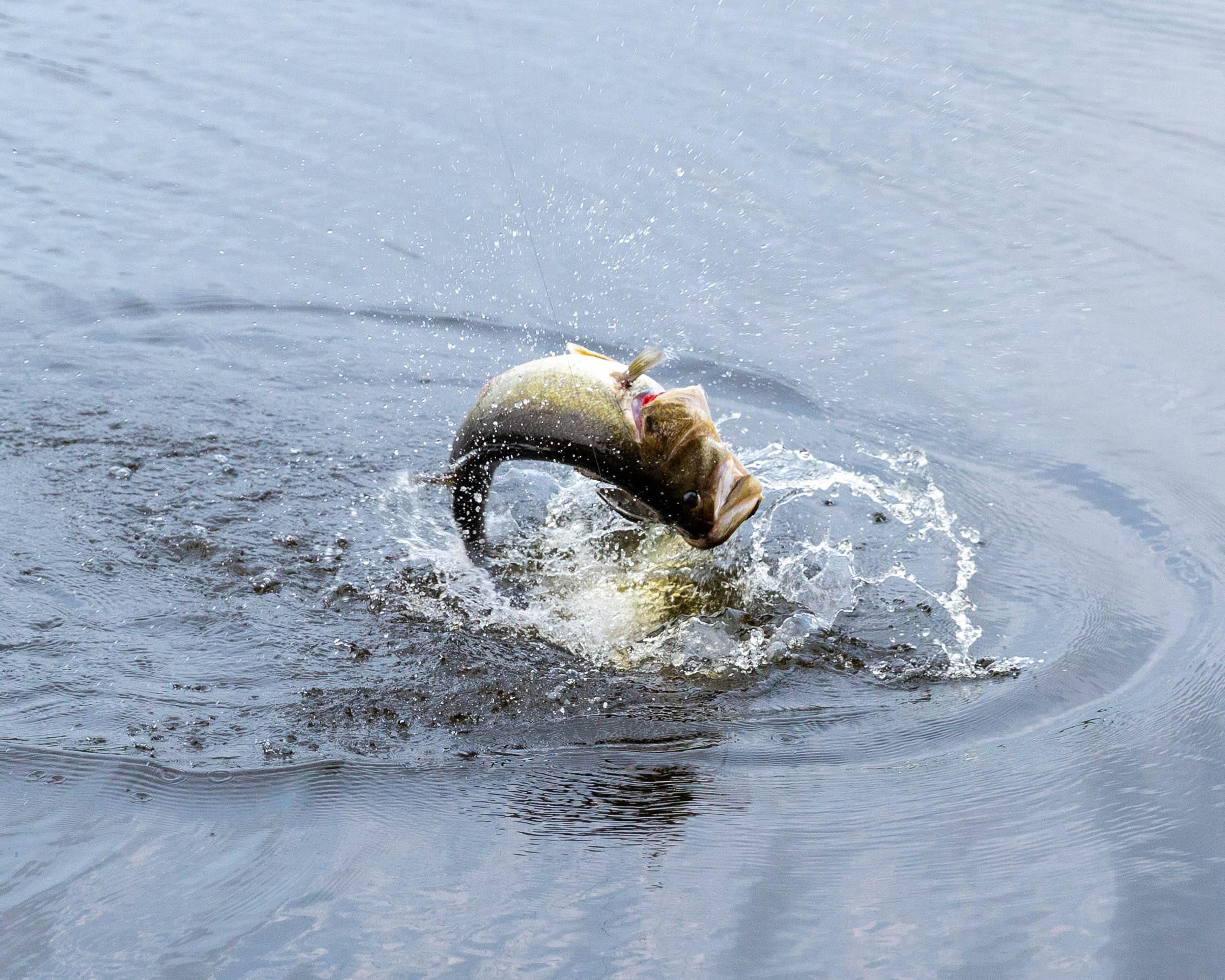Everyone could use some bass fishing tips now and again and that is what we’ve got for you. If you’re planning a bass fishing trip with your family it’s important to know what you’re looking for.Every type of fish has unique characteristics and requires different tactics to catch them. There are some very specific tricks for bass fishers especially in the difference between the Smallmouth and the Largemouth.
If you’re on Eastern Ontario waters, here are some bass fishing tips to know if you’re getting started:
Largemouth Bass
 The largemouth bass is an olive green fish (see image,) marked by a series of dark blotches forming a jagged horizontal stripe along each flank.
The largemouth bass is an olive green fish (see image,) marked by a series of dark blotches forming a jagged horizontal stripe along each flank.
When bass fishing, the easiest way to tell if you’re looking at a largemouth bass over a smallmouth is the size of the mouth! If it has a big lower jaw, you’ve got yourself a large mouth. The largemouth bass is the largest of the “black bass” family, and the female is generally larger than the female. The reason this is important is because this is one of the reasons it’s a game fish: everyone wants a big fish, but we don’t want to overfish the fertile female population. There’s a code of ethics that governs this message, so make sure you’re being cool.
Largemouth bass tend to consume smaller fish, snails, crawfish, and some amphibians, depending on where in the water they are. Adult largemouth bass are known to hug the bottoms of lakes and seek cover in patches of weeds. At this depth, they consume smaller fish, so that should inform what sorts of lures you go for. Anyplace you know there to be decent cover in the water is where you will likely find them (although they are known to swim in open waters as well.)
Smallmouth Bass
The smallmouth bass is generally brown with big red eyes. The same law applies to the smallmouth as to the largemouth: look at the mouth. If it looks more normal, you got yourself a smallmouth bass (there does not exist a mediummouth bass.) Once more, the males are smaller than the females, so the same bass fishing rules apply: catch-and-release.
The males tend to range around two pounds, while females can range from three to six pounds. Not only do they have smaller mouths, but they are smaller in size. The smallmouth bass is also notorious for being a fierce fighter as it is being reeled in; it will jump around and thrash wildly, which can be quite a spectacle.
The smallmouth, again like the largemouth, prefers cover and both types will avoid direct sunlight whenever possible. You’ll find them both in cover, in the shade, or anywhere that is dark and cool. Both fish are carnivorous and feed primarily on smaller fish. In fact, when bodies of water are known to be bare of cover and other cool places, bass are notorious for decimating the local fish populations.
We hope you enjoyed our bass fishing tips and we look forward to seeing you out on Loughborough Lake this summer!
Contact The Loughborough Inn today to find out more about what the area has to offer!

